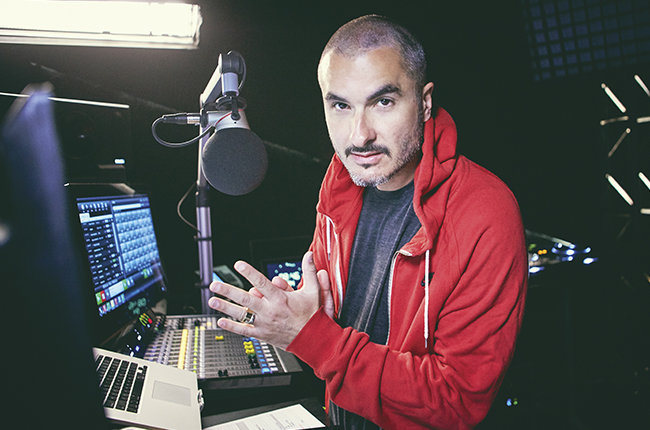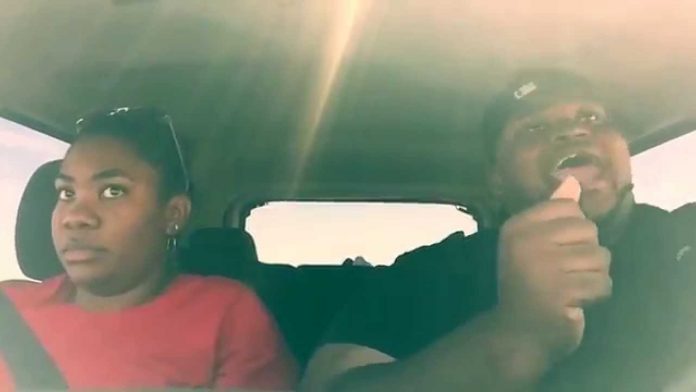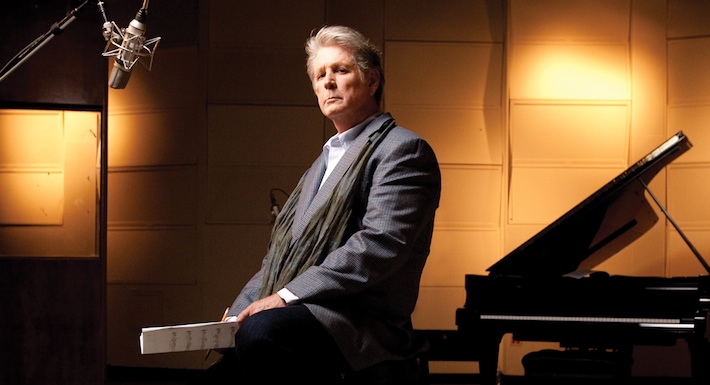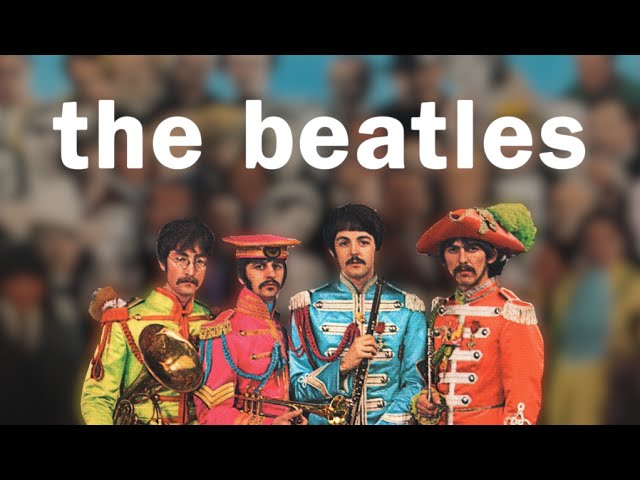Check out the $50,000 final match at the 2007 USARPS Championship in Las Vegas, the biggest throwdown in hand sport history.
Read the FBI file kept on comedian George Carlin
Documents from the FBI reveal that J. Edgar Hoover took personal offense to comedian George Carlin following his appearances on “The Carol Burnett Show” and “Jackie Gleason.”
Carlin and his “Seven dirty words” comedy routine were central to the 1978 U.S. Supreme Court case F.C.C. v. Pacifica Foundation, in which a 5–4 decision affirmed the government’s power to regulate indecent material on the public airwaves.
According to documents requested by Shawn Musgrave, the FBI first took notice of Carlin following his 1969 Jackie Gleason appearance where he “referred to the Bureau and the Director in a satirical vein.” They maintain that the bit was “considered to be in very poor taste” and “it was obvious that he was using the prestige of the Bureau and Mr. Hoover to enhance his performance.”
Shawn Musgrave made this request to Federal Bureau of Investigation of the United States of America.
…and here they are.
Via MuckRock
Beat 1’s Zane Lowe on Trent Reznor: ” He’s one of the most intelligent, eloquent, passionate people I’ve ever met.”
Beats 1 was basically Trent Reznor’s idea?
Zane Lowe: Yeah. I’m not sure if you’ve had a chance to sit with Trent, but he’s one of the most intelligent, eloquent, passionate people I’ve ever met, not just for art, but also the way people can use it. He’s really committed to the user experience, so his whole thing was like, “People have been splintered off into individual experiences — let’s see if we can bring them back together and if so, what would that feel like for the user? What if they’re using it on a device in a music service, and not in the traditional places where radio is experienced?” It was incredibly useful for me to hear him say that because it really [solidified] some of the ideas that I’d been kicking around but wasn’t sure if I was on the right path. What is really valuable and exciting about radio is the connection to a community. Trent has been incredibly supportive every step of the way.
Via Billboard
PEANUT BUTTER WOLF’S COVER OF “BOYZ IN THE HOOD” FROM 1987
In 1987, I had just graduated high school and moved from San Jose to Long Beach, CA for college. I chose Long Beach State because I assumed it would be a party school since it had ‘beach’ in the name. My parents helped me move all my belongings which were my clothes, 2 turntables, a mixer, speakers, an amp and probably around 10 crates of records. I was into hip hop, but wore vintage clothes from thrift stores and had a mushroom haircut so wasn’t really accepted by the other college students who never understood me. So I was a loner who pretty much stayed in my dorm room and made music all the time. I remember saving my money once I got there and eventually bought a 4-track recorder and a Casio drum machine that had 4 pads, each with a split second of sample time. I got the drum machine used for like $300 and was very excited. Next step was to find a rapper so I put an ad in the paper. I said my influences were Schoolly D, Just Ice, Scott La Rock, and Ultramagnetic MCs. ‘Hardcore rap.’ That’s how I found Spunky Spunk Dogg, a Cholo rapper from Long Beach. A few years later when Snoop Doggy Dogg came outta Long Beach, I wondered if he knew Spunky Spunk Dogg, but that’s another story. Spunky had more tattoos than I had ever seen on a human, especially for 1988 and I was always kinda afraid of rolling with him cuz I didn’t really know his background, but he always treated me with respect and admiration. I made the beats and did the cuts. This recording is the only one I have with him from back then and we performed outside at the backyard of a BBQ on a Sunday afternoon for an audience of around 15-20 people. We did around 5 or 6 original songs we had made and 1 cover and for the cover, we chose the biggest rap song in LA at the time. My turntable kept skipping as it wasn’t a 1200 and nobody even really cheered. I don’t even recall people really paying attention, but we were having fun and it was our first and last show together as a group. This was in the summer of ’88, and soon after, I moved back to San Jose, where I eventually met Charizma and started all over again. — PBW 8/14/2015
The New York Times on laptop computers, 1985
WHATEVER happened to the laptop computer? Two years ago, on my flight to Las Vegas for Comdex, the annual microcomputer trade show, every second or third passenger pulled out a portable, ostensibly to work, but more likely to demonstrate an ability to keep up with the latest fad. Last year, only a couple of these computers could be seen on the fold-down trays. This year, every one of them had been replaced by the more traditional mixed drink or beer.
Was the laptop dream an illusion, then? Or was the problem merely that the right combination of features for such lightweight computers had not yet materialized? The answer probably is a combination of both views. For the most part, the portable computer is a dream machine for the few.
The limitations come from what people actually do with computers, as opposed to what the marketers expect them to do. On the whole, people don’t want to lug a computer with them to the beach or on a train to while away hours they would rather spend reading the sports or business section of the newspaper. Somehow, the microcomputer industry has assumed that everyone would love to have a keyboard grafted on as an extension of their fingers. It just is not so.
But the real future of the laptop computer will remain in the specialized niche markets. Because no matter how inexpensive the machines become, and no matter how sophisticated their software, I still can’t imagine the average user taking one along when going fishing.
Seven hours of guy lip-synching during a long road trip
White Rhino’s sister is not too excited about his lip-synch performance during their 7-hour road trip or his choice of music.
Brian Wilson On World Cafe
You’d think it would be difficult for Brian Wilson to pick his favorite Beach Boys song, but he’s decisive: It’s “God Only Knows.” In this conversation on World Cafe, he also says that while he loves the new Wilson biopic Love & Mercy (out Friday), there are parts that were hard for him to watch.
The full conversation is at the audio link above. You’ll also hear music from Wilson’s new solo album, No Pier Pressure, plus extraordinary exclusive live performances of Beach Boys classics.
How The Beatles Changed Album Covers
A great look at the most iconic visual supplement in the history of music.
Why ska is the mother of reggae
If there’s one musical style that epitomizes summer, it might be the loping island style of ska. It caught fire in early ’60s Jamaica, a precursor to reggae.
But ska has gone through a few iterations.
Ska is really a fusion of American R&B with Jamaican jazz, says Brad Klein, a Minneapolis-based filmmaker who traced the history of ska in a documentary, “Legends of Ska. Without Ska, there is no reggae.”
“Bob Marley, Peter Tosh, and Jimmy Cliff … all started in ska as teenagers. So, ska is the mother of reggae,” he says.
Klein’s love affair with ska began when he was working at a reggae record company, selling, doing publicity and promotion. His documentary includes three crucial early ska tracks.
“My goal was to teach people and to show the world that there’s much more to Jamaican music than Bob Marley,” says Klein.
Not only has ska had worldwide revivals in the punk 1970s (think The Specials, Madness, English Beat) and the 1990s (think The Mighty Mighty Bosstones), it still is popular. Klein says it’s most popular in Mexico and Latin America and endures in Japan as well.
Via PRI









